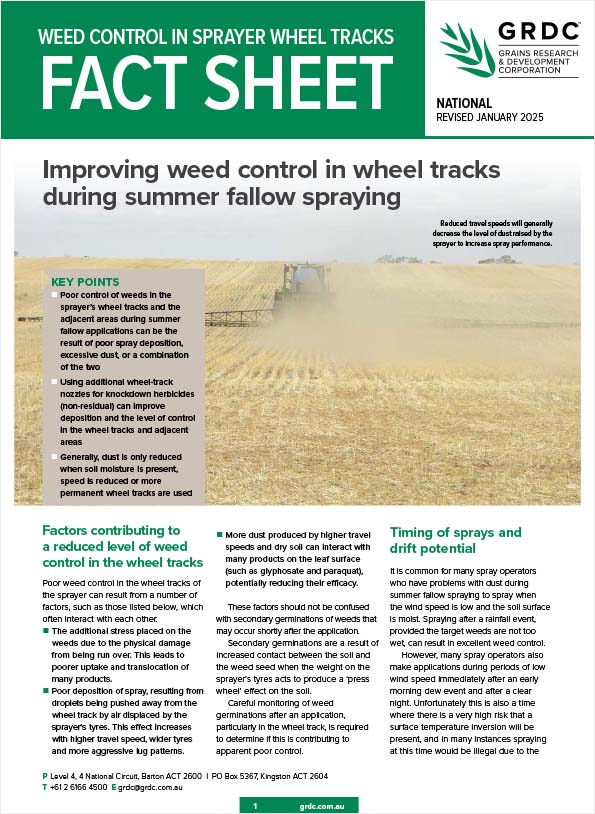Weed control in sprayer wheel tracks
Weed control in sprayer wheel tracks
Published: 31 Jan 2025
Poor spray application and excessive dust affect weed control in sprayer wheel tracks. This fact sheet shows how to improve weed control in wheel tracks during summer fallow spraying.
Key points
- Using extra wheel-track nozzles for knockdown herbicides (non-residual) can improve spray application.
- Assess application in and near the wheel-tracks with fluorescent dye or water-sensitive paper.
- Generally, dust is only reduced when:
- soil moisture is present
- speed is reduced or
- more permanent wheel tracks are used.
Want a printed copy?
Printed copies of some publications are available for growers, advisers and farming systems groups, for personal use and distribution at GRDC events.
Contact GroundCover Direct on 1800 11 00 44 or email ground-cover-direct@canprint.com.au to request copies. Publications are free but postage and handling costs may apply.
Download PDF
Region: National
GRDC Project Code: ICN2203-002SAX,

